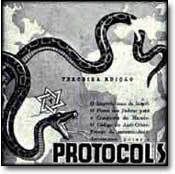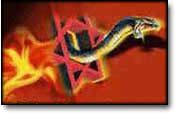According to The New York Times, there is no siege of Gaza, no occupation of the West Bank, and never was there a Nakba (the 1948 ethnic cleansing of Palestine). Three recent articles erase these key Israeli crimes from the historical record.
Saturday, 5 January 2013
How The New York Times erases Israel’s crimes
In a 13 December 2012 article entitled “Hamas Gains Allure in Gaza, but Money is a Problem,”
Steven Erlanger explores the reasons for Gaza’s increasingly
debilitating poverty. Never once in this 1,300-word piece does Erlanger
even mention the Israelisiege on Gaza or the 2008 and 2012 Israeli bombardments as factors (much less the principal causes).
Instead, Erlanger goes through a long list of regional developments (the weakening of the Assad regime in Syria, sanctions on Iran) and, most emphatically, decisions byHamas (new
taxes and fees), which have supposedly left Palestinians in Gaza not
only increasingly impoverished but also more resentful than ever of
Hamas. “Gazans recognize that there is more order here,” Erlanger
explains, “more construction and less garbage. But many resent the
economic burden of financing Hamas and, implicitly, its military.”
So to the extent that the most recent Israeli onslaught is considered at all, it is Hamas’rockets,
once again, that are blamed for Gaza’s misfortune. As if to prove his
point, a 43-year-old butcher says to Erlanger, “things have steadily
declined in Gaza.” Another Gaza resident adds, “it is a life of
depression and deprivation.”
Erlanger
does include the word “siege” in his analysis, but only amidst a quoted
laundry list of problems Palestinians in Gaza now endure: “poverty,
mismanagement, siege, unemployment, little freedom of movement,” Mkhaimar Abusada is quoted as saying.
And
the siege, among these other conditions, is implicitly attributed not
to Israel, but to Hamas: “If it can’t deal with these same issues,”
Abusada concludes, “Hamas will find itself in the same position as it
was before the war.” While Abusada, a political scientist at Al-Azhar
University, certainly knows the origins of these conditions, Erlanger’s
placement of his quotation makes it seem that even Abusada blames the
siege on Hamas.
Either
way, Erlanger does not provide any sense of how totalizing and
devastating a ground, air and naval blockade (much less the two recent
military assaults) of the densely populated territory actually is. An
uninformed reader could easily conclude that the siege is something for
which Hamas is responsible, not an imperially-imposed form of collective
punishment foisted upon Palestinians by Israel, and not something that
is directly responsible for Gaza’s poverty and “little freedom of
movement.”
Thus, according to The New York Times, Hamas is responsible for Gaza’s problems; Israel has nothing to do with it.
A Times article about Palestinian refugees in
Syria published three days after Erlanger’s Gaza story obscures the
reason that Palestinians are refugees in the first place (“A Syrian airstrike kills Palestinian refugees and costs Assad support,” 16 December 2012).
With just eight words, the Times absolves Israel of any responsibility for the ethnic cleansing of hundreds of thousands of Palestinians to make way for a Jewish state.
Reporting on the Syrian regime’s recent attack on Yarmouk camp in Damascus, home to thousands of Palestinian refugees, the Times explains
that the Palestinians there were “refugees from conflict with Israel
and their descendants.” The Nakba, the original sin of Zionism and
the State of Israel, is thus smeared into obscurity. It is transformed
into something it is not, changed from the wholesale removal of one
group of people by another to a conflict between two presumably equal
sides, from which a bunch of Palestinians evidently fled.
The
newspaper of record does not, of course, go on to explain that while UN
Resolution 194 specifically grants the Palestinians in Syria (as well
as those in Lebanon, Jordan and elsewhere) the right to return to their homes in what is now Israel, the Israeli government has always — and, at times, violently — denied this right.
An article published the following day, on the so-called E1 land east of Jerusalem in
the occupied West Bank, fails to mention that this land and the broader
territory of which it is part, is considered by international law to be
a Palestinian territory currently under Israeli occupation (Steven
Erlanger, “West Bank land, empty but full of meaning,” 17 December).
Reporting on Israel’s recent declaration to build settlements on
E1, Erlanger reproduces the oldest Zionist myth in the book: that this
is an “empty” land, over which now the “two sides” are struggling: “E1
[is] a largely empty patch of the West Bank,” Erlanger writes. And the
“fight” over E1 “speaks to the seemingly insurmountable differences,
hostility, and distrust between the Israelis and the Palestinians,”
Erlanger informs us.
Thus, the occupied Palestinian West Bank, with all its illegal Israeli settlements, Jewish-only roads, Israeli checkpoints,
Israeli military incursions and Israeli demolitions of Palestinian
homes, is reduced to a territory to which two different groups are
laying equally legitimate claim. The closest Erlanger gets to even
hinting at the occupation is where he writes toward the end of the
article that E1 is “largely state land.”
But
this, like the unidentified and unexplained “siege” in Gaza, is far too
vague for an uninformed reader to understand which “state” controls
this land, under which conditions, and against whose rights, livelihood
and sovereignty.
So
there you have it: no siege, no Nakba, and no occupation. Such
reporting is, at best, delusional. At worst, it is intentionally
misleading. In any case, The New York Timesserves Israel’s interests by keeping the American public in the dark about the true nature of Israel’s occupation.
It
is easy to understand why so many Americans find the situation so
apparently confusing when the people who report on it are themselves
confused about the very basic historical, geographic and political
realities.
Posted @
13:38
![]()
Subscribe to:
Post Comments (Atom)
![[9_10_s22.jpg]](https://blogger.googleusercontent.com/img/b/R29vZ2xl/AVvXsEjTXnQay9wzz0E6nVHrVhaHKoq_zYXDqZjijHlNDQzj90MZzInrCuVX4ciFYCiBfZ7lhlgr2bBhhnl7ddWbhdih5JbXjQYbA605TNyiq046bQqjG2A4S-nHTmh1VBTQSG6tmc23wq47QQ/s1600/9_10_s22.jpg)




No comments:
Post a Comment